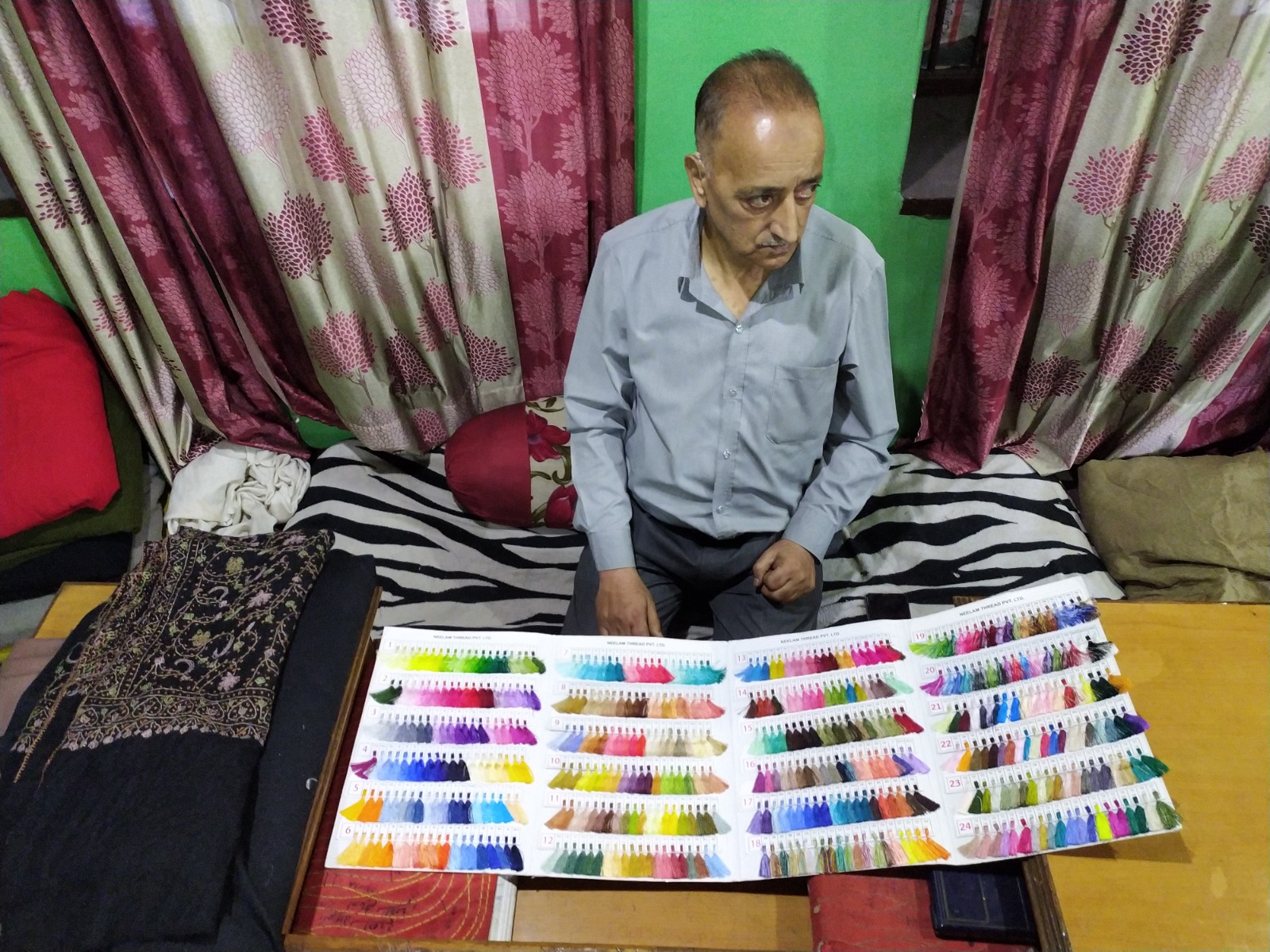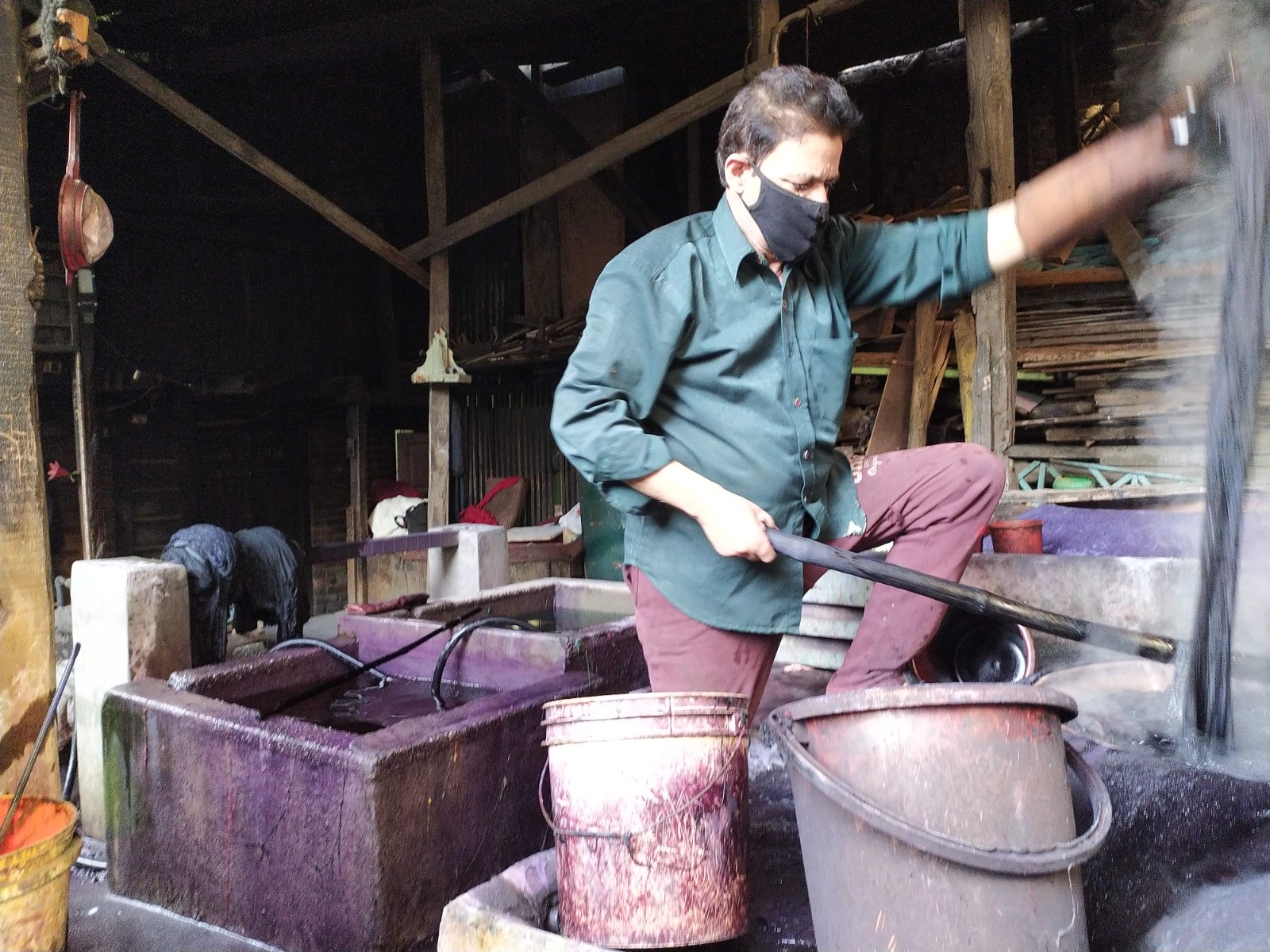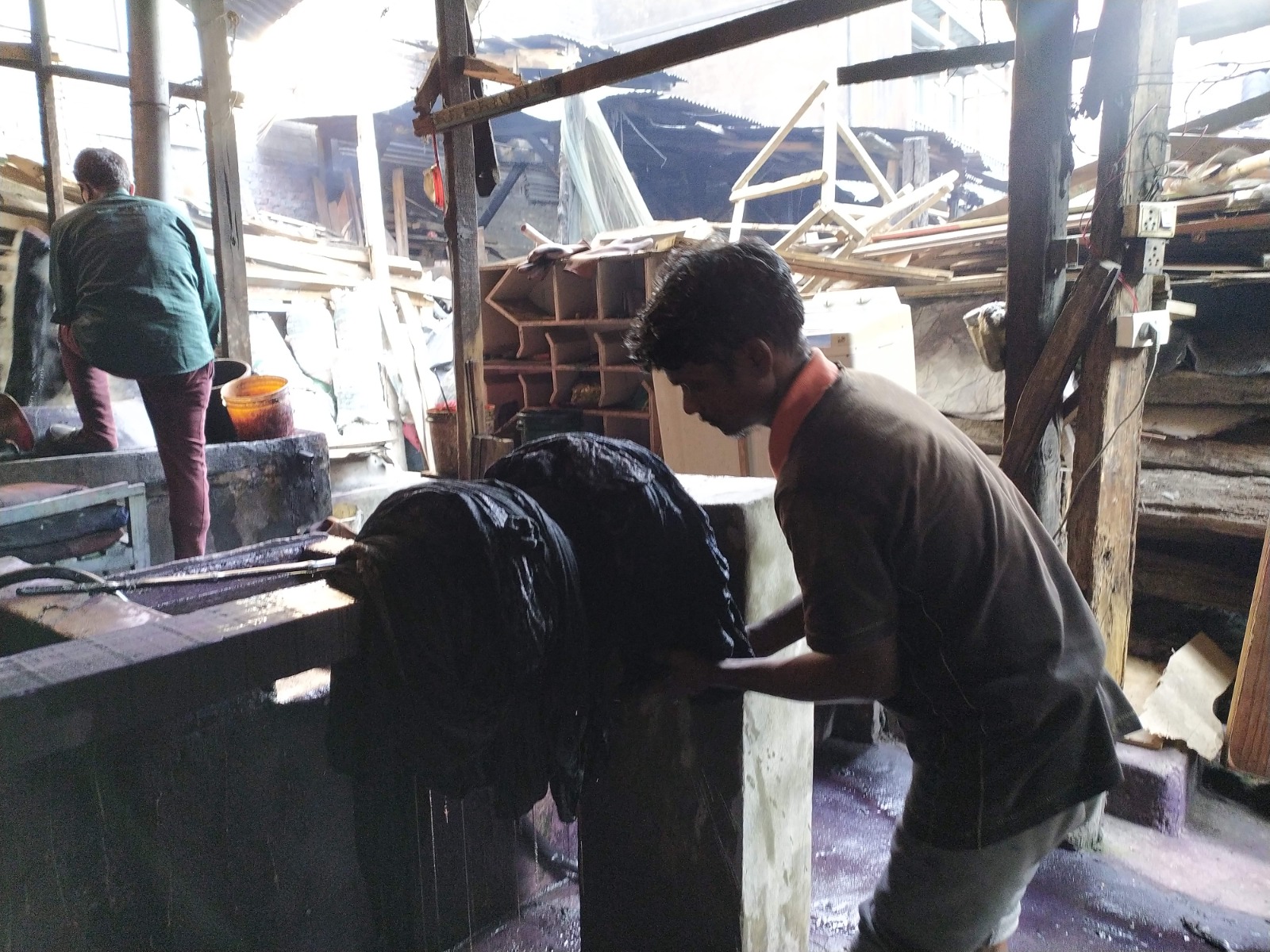The early morning mist clings to the narrow streets of Nishat, Srinagar, as Abdul Majeed Rangrez, disguised as a weathered old man, embarks on his daily journey to the heart of his family's legacy - the ancestral Dye Factory nestled in Ranger Stop Srinagar. With a lifetime of memories and determination etched into his face, he takes his seat behind a low, desk adorned with a Dyeing Shade Chart.

Abdul Majeed Rangrez, 70 years old, stands as a bridge between his family's 150-year-old dyeing tradition and the modern world. For six decades, he has been battling to keep this traditional heritage alive. As a third-generation dyer, Abdul Majeed's roots run deep, harking back to his grandfather and father, who toiled in this very place.
"I remember 1963 vividly. I was in 8th grade then, I abandoned my schooling to enter this world of dyeing," recounts Abdul Majeed.
Alongside his father and other artisans, I joined the art of dyeing textiles, including shawls and fabrics from Kolkata, which were later exported as Kashmiri masterpieces to places like Bombay (now Mumbai) and Delhi, he reminisces.
Yet, this age-old practice weathered a series of takeovers, he says.
The tide shifted to Amritsar Art and then to the 'Export Textile Business.' Abdul Majeed recounts these shifts, a testimony to the ever-changing landscape of trade.
The economic significance of Kashmir's import and export trade, historically buoyed by its vibrant dyeing art, cannot be overstated. Pashmina shawls, often referred to as the 'Art of Royal,' have been a cornerstone, he says.
"Even Pashmina's unmatched quality and craftsmanship make it a symbol of Kashmir's textile legacy. Pashmina's production has evolved with time, its soul remains in Kashmir, the unrivaled hub."
Jammu and Kashmir's small-scale industries, encompassing weaving and dyeing, have provided employment for nearly 400,000 artisans. The region's export value stood at $188.18 million in 2019-20, a number that reached $199.47 million by January 2022.

Nevertheless, it was Abdul Majeed's grandfather, Late Mohammad Ramzaan Rangrez, who ran a Cotton Dye shop in Navid Kadal and later established the Dyeing Factory at Ranger Stop Srinagar.
“He was joined by his brothers. At that time, there were only four ancestral family dyers in the entire Jammu and Kashmir state,” Majeed tells The Himalayan Post.
“That’s why it is called Ranger Stop, located in Khanayar, Srinagar, the place got its name from the local residents whose profession defined the place. In Kashmiri, 'Ranger' means Dyer.”
"Here, we dye a plethora of products like Maskar, Pashmina, and Pocket Handkerchiefs. Local traders and exporters, including Nakash, Lala, Peer, Ashraf, and Mattoo, supply us with these materials.
The dyeing process involves lighting firewood, with up to forty trucks' worth brought in annually from areas like Boniyar and Baramulla. Our 100 ml dyeing bowls can color around 200 shawls or other materials simultaneously. Unfortunately, in recent years, this art has faced a decline due to insufficient Maskar production," laments Majeed.
Despite his age, Abdul Majeed's spirit for this art remains unwavering. His son Musa and nephew Aadil, both graduates, now stand beside him as they navigate the dyeing factory. However, the future of this profession seems uncertain, as Majeed acknowledges the challenges they face.

"We have contributed immensely in this industry, still we've received no support. We appeal to the government for beneficial schemes and a helping hand," he concludes.
Amidst the rhythms of tradition and the tides of change, Abdul Majeed Rangrez remains a guardian of heritage, dyeing threads that connect generations past and future.